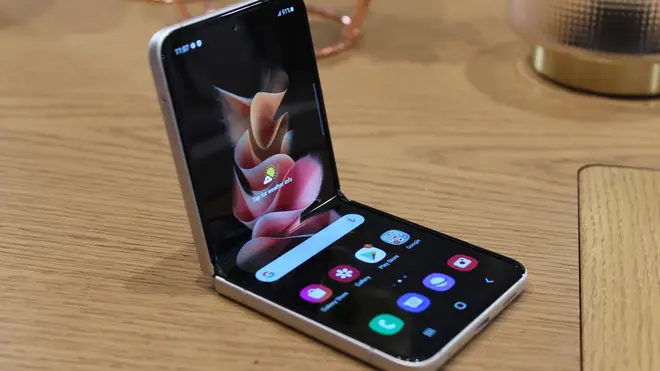
Shelagh Fogarty 1pm - 4pm
26 December 2021, 00:04

It’s been a busy year for new tech.
2021 was another year for new gadget launches, with flagship smartphones touting ever more professional-level cameras and foldable screens moving into the mainstream.
But beyond that, there were also a number of announcements that should shape the industry and how people communicate and are entertained for years to come.
Here is a look at the most notable new gadgets unveiled over the last 12 months.
– Samsung foldables
This was the year when foldables went “mainstream”, Samsung declared as it took the decision to skip releasing a new version of its popular Galaxy Note device and instead unveil two new foldables.
The Samsung Galaxy Z Fold3 was the big and bold phone with a traditional screen on the front but opening out to reveal a tablet-sized display on the inside, while the Flip3 is a modern take on early 2000s flip phones, with a smaller display on the outside when the device is closed for viewing notifications.

Although neither was the first of its kind for Samsung, crucially they have evolved enough in terms of features and pricing to be genuine alternatives to traditional “flat phones” for the first time.
And in an age where most phones all look like the same black block, Samsung’s shake-up could spark a new wave of foldables.
– Facebook’s Ray-Ban Stories smart glasses
Smart glasses have been done before, but a company the size of Facebook moving into the space is a sign that the industry as a whole is set on embracing the technology.
Facebook’s Stories – made by Ray-Ban – are similar to the Snapchat Spectacles in that their main purpose is a device for capturing images and videos from a first-person perspective.
On the positive side, they look much more like “regular” glasses than other smart glasses and that makes them less off-putting.
On the downside, society as a whole still isn’t ready or comfortable with the idea of people walking around with video cameras on their face taking photos or videos at a moment’s notice without the telltale sign of getting their phone out first to do so.
Smart glasses still have a way to go, but these appear to be a small step on the road to acceptability.
– The Metaverse
Not a gadget, but a major announcement during the year was Facebook’s intention to shift towards becoming a “metaverse company”.
The metaverse is a 3D online world people enter using devices such as virtual reality headsets and smart glasses – another reason those Ray-Ban Stories could prove to be an important step – and interact with others as though in the same room as them.
Early examples from Facebook have shown people holding meetings in the metaverse where attendees are spread around the world but meet virtually in a customisable location using personal avatars to represent themselves.
In essence, the idea is for a 3D internet where video calls and message boards are replaced by virtual 3D spaces for working and socialising.
It’s a long-term project – despite Facebook’s excitement, virtual reality headset usage is nowhere near what it needs to be for the metaverse to truly to take off, and many of us would probably need a better internet connection to take full advantage of it.
– Sky Glass
A substantial shift in how Sky TV is introduced to and then watched in the home, Sky Glass takes the box and satellite dish, puts them inside a TV and runs the whole thing over your home broadband.
On the plus side, the Sky installation process no longer requires an engineer scaling your home to put up a dish – instead it’s plug in and connect to wifi, done.
On the downside, there have been early signs that it’s still a work in progress – the interface is busy and confusing, taking away the record button upsets the rhythm of how many people use Sky, and the dependence on an internet connection means if your wifi goes down it now takes your entire TV with it.
– Pixel 6
Google has long been trying to make a smartphone to rival the iPhone and Samsung’s Galaxy S series, but in truth previous generations of its Pixel haven’t come close.
Their latest effort, however – the Pixel 6 – has closed that gap noticeably.

Like most Pixel phones, the cameras are excellent, but the addition of impressive editing features like Magic Eraser, which allows you to easily remove objects or photobombers from the background, has further elevated what the camera system is capable of.
Crucially, the rest of the phone is catching up now too, with all the best Google apps and technology better integrated into the device and running more seamlessly, in part thanks to Google’s decision to use its own-made Tensor chips in the phone, which has made for a much better experience for users.